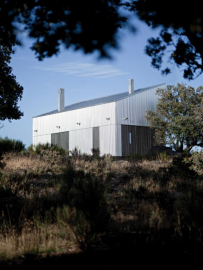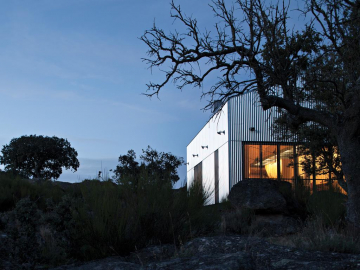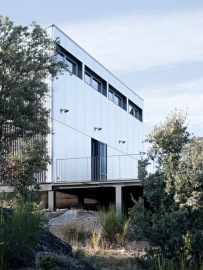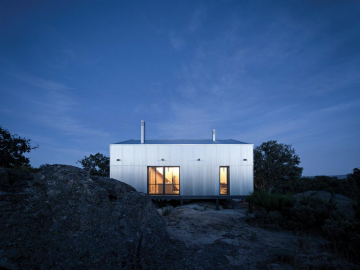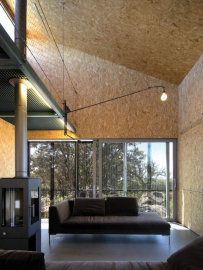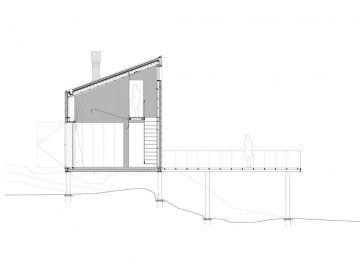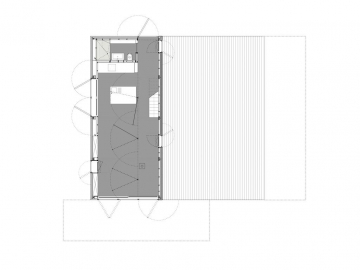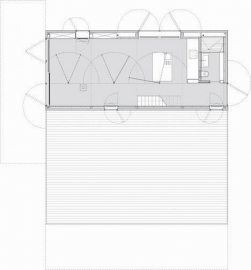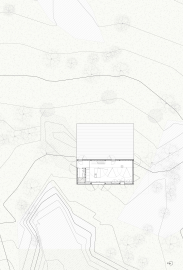Garoza House 10.1
Casa Garoza 10.1
Industrialized prototype for a growing house
An Industrialized modular housing prototype that allows growth and changes over time. The whole building process is dry, and all the constructive elements are manufactured in specialized factories, delivering single complete units-including all the interior finishings- up to the maximum size supported by the conventional transport (3m wide, 2.50m high, and up to 12m long).
Only the outer layer of the façade and the roof are placed on site to ensure the continuity, overlapping and waterproofing of the material junctions. Interior partitions, storage and fixed furniture are incorporated into the vertical walls, which house high performance installations, home automation devices and other customized elements, tailored to each configuration. The result provides quality, as well as an accurate control on the construction schedules , maintenance plans and eventual extensions, improving traditional procedures. The principles of sustainable economy and the spirit of recycling guide and support all the project decisions.Some people find in the second home a relaxing and idyllic counterpoint to the exhausting life in the city, while others find in it one of the exciting components of the so-called urban culture. Within this complex system, Nature would represent the conscious materialization of a dream, not working as the opposition to the city, but as an expansion of the experiences of its inhabitants.
Garoza House 10.1 is conceived as an industrialized, scalable and growing prototype, which is adapted to its usersŽ basic and specific requirements, and that is ready to become larger as do their needs and interests. This first phase has been designed around a large double-height interior space, that houses all the primary and daytime typical functions, live, cook and eat. For the moment, corners, mezzanines and transition spaces become the places to sleep, work and store. Outside the house, a non-proportional terrace is used as an observatory, but also as a piece of the artificial landscape created by the house. This house doesnŽt acquire a piece of land for gardening, nor aims to modify Nature at all, but leaves the ground untouched by letting its weight rest on a few legs, which show how softly and carefully it was planned to dialogue with an admired landscape.
Finishing materials, shape and openings distribution might change in forthcoming houses, while the idea of integration by contrast more than by mimesis will remain. Materials, their changing appearance due to the variable incidence of light and the absorption of winter leaden colors of the sky. The image of the house will always be unique and different: integrated by reaction rather than by camouflage. Shape, to express how the house is interested in the landscape, showing where it wants to look at or which orientations it tends to protect from. Openings, modifying their size and position depending on the purpose, whether it looks for light, sun, ventilation, shading or views, but not betraying from the outside, the content of the inside.
Building this house at specialized factories, using 3m wide modules because of the road transportation limits, moving it to its specific location in one day, respecting the original landscape, planning construction phases without disturbing the previous ones,
all of this shows how concerned the house is about a urban technical quality. Conceiving an object according to contemporary aesthetics and technology, and placing it into the Nature is a gesture that is closer to art more than to tradition of building the house as the classic method of appropriating the place. Rising from the ground and staring at the horizon, instead of breaking the ground and burying the roots in it, the house prefers extolling the horizontal scenery to looking for the sublime connection between the earth and the sky. Dialogue against conquer.
An exciting experience that includes both the old desire of the houses built in factories that architects have pursued from the modernity under the idea of an installation or piece that enriches contemporary art.


